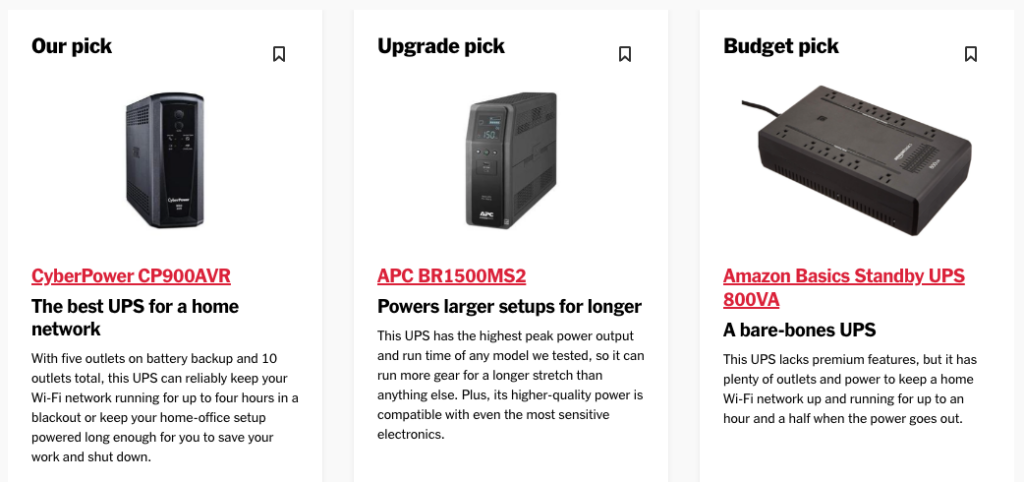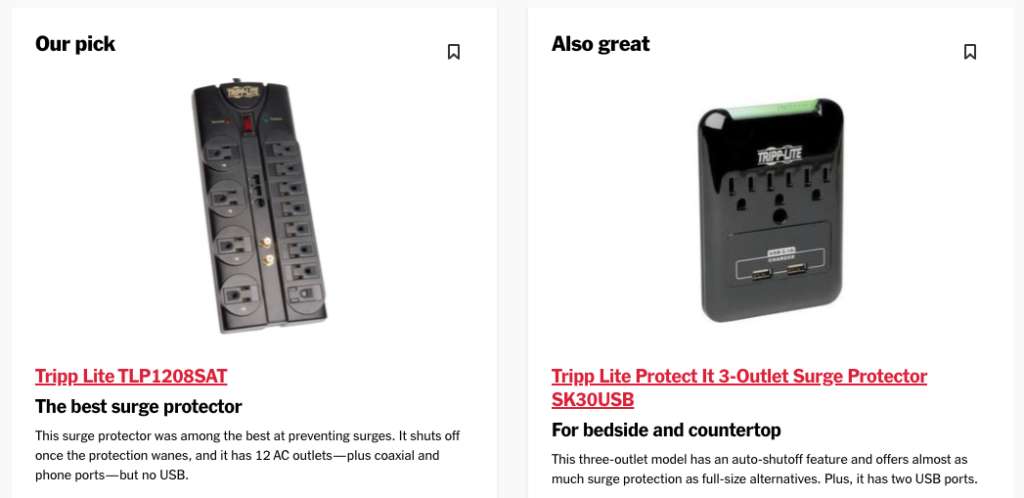It’s been a tough year for extreme weather events. While the connection between weather and technology may seem tenuous, heat waves, strong winds, and lightning strikes can wreak havoc on a variety of powered and connected electronic devices.
Anything that causes power fluctuations (spikes, surges, voltage sags, blackouts, and outages) can damage your technology. Protecting your most vulnerable devices doesn’t have to be expensive, but don’t get complacent about plugging your Mac into the cheap surge protector you’ve had since college. Note that many power strips offer no surge protection at all.
First, why is power fluctuation a problem? There are two situations:
- Power is too small: Voltage sags and blackouts refer to voltage drops; voltage sags are short-term drops, while voltage dips last longer. A blackout is a complete blackout. Although they are less damaging than surges, voltage sags and outages can cause electronic equipment to behave erratically or crash, while voltage fluctuations, especially when recovering from an outage, can stress components. A complete power outage will cause you to lose all unsaved work and may ultimately lead to document or even drive corruption.
- Too much power: Spikes and surges are sudden, brief increases in voltage; the difference is that spikes are shorter than surges. Either way, too much power can degrade or damage sensitive electronic components, shorten service life or cause immediate failure.
The best solution for these situations is an uninterruptible power supply (UPS). Simply put, a UPS is a big battery that you plug your Mac and other peripherals into. Then plug it into a wall outlet and monitor the input power. If power surges, falls below a certain threshold, or fails outright, the UPS switches power to its internal battery. This happens so quickly that your Mac doesn’t even notice.
If your equipment is plugged into a UPS during a power outage, you will have some time to save your work and shut down gracefully, ensuring you don’t lose data or have the drive damaged. A UPS also protects against spikes and surges, filtering out excess voltage so that it doesn’t damage the devices plugged into it. The disadvantages of a UPS are that they cost extra, require battery replacement every few years, and take up space under your desk. For a home or small office UPS, see Wirecutter’s recommendations. For larger installations please contact us.

If power outages are rare in your area, you may prefer a surge protector instead of a UPS. As the name suggests, surge protectors filter out voltage spikes and surges so they don’t damage your equipment. Surge protectors are smaller and cheaper than UPSs, and while they are immune to battery failure, their protection circuitry degrades over time and should be replaced every few years. Better surge protectors will alert you or stop working entirely when they can no longer provide protection. Wirecutter again has great advice.

If most of your expensive tech equipment is battery-powered, you might even be able to forego a surge protector. Power outages are not a problem, a MacBook or iPhone power adapter protects against most voltage dips, blackouts, spikes, and surges. Power adapters can break, but are cheap to replace.
One last thought. Neither a UPS, surge protector, nor power adapter can protect against a direct lightning strike. Lightning is so fast and powerful – with voltages reaching millions or even hundreds of millions of volts. Even turning the device off is not enough because lightning that travels miles through the air to reach the ground can easily skip an open switch. If lightning strikes are common in your area, completely unplug your most expensive equipment during severe storms.
Summarize:
- For desktop Macs and peripherals, a UPS is a worthwhile investment if you ever experience a power outage. Also consider a UPS for basic network equipment (cable modems, routers, switches, and network-attached storage).
- If a power outage is extremely rare, or for equipment that doesn’t need to stay on during an outage, invest in a good surge protector. If it doesn’t automatically deactivate when it’s no longer valid, write the date at the bottom and replace it after a few years.
- While there’s no harm in doing this, there’s no need to plug your battery-powered device charger into a surge protector or UPS. Spikes or surges may damage them, but they may sacrifice themselves to protect your gear.
- When in doubt during a severe storm, unplug your most valuable equipment to prevent direct lightning strikes.
(Featured image via iStock.com/HardRockShotz)